Juicy, meltingly tender beef cheeks, slow braised in red wine and served with a sweet and sour shallot jus, deep in flavour and easy to prepare. Make this delicacy for your next special occasion with our step by step recipe.
Even though cooking beef cheeks, take a fair amount of planning and time, they are worth the effort! It takes a good 20 minutes spent in the kitchen and 2½ hours waiting time. The reward, is these "melt in your mouth" cheeks, rich in flavour with a soft and sticky texture.
The good news is, the sauce is already part of the dish so you don't have to worry about preparing that separately. Made with red wine, tomato paste, caramelised vegetables, herbs and spices, encompassing the braising cheeks.
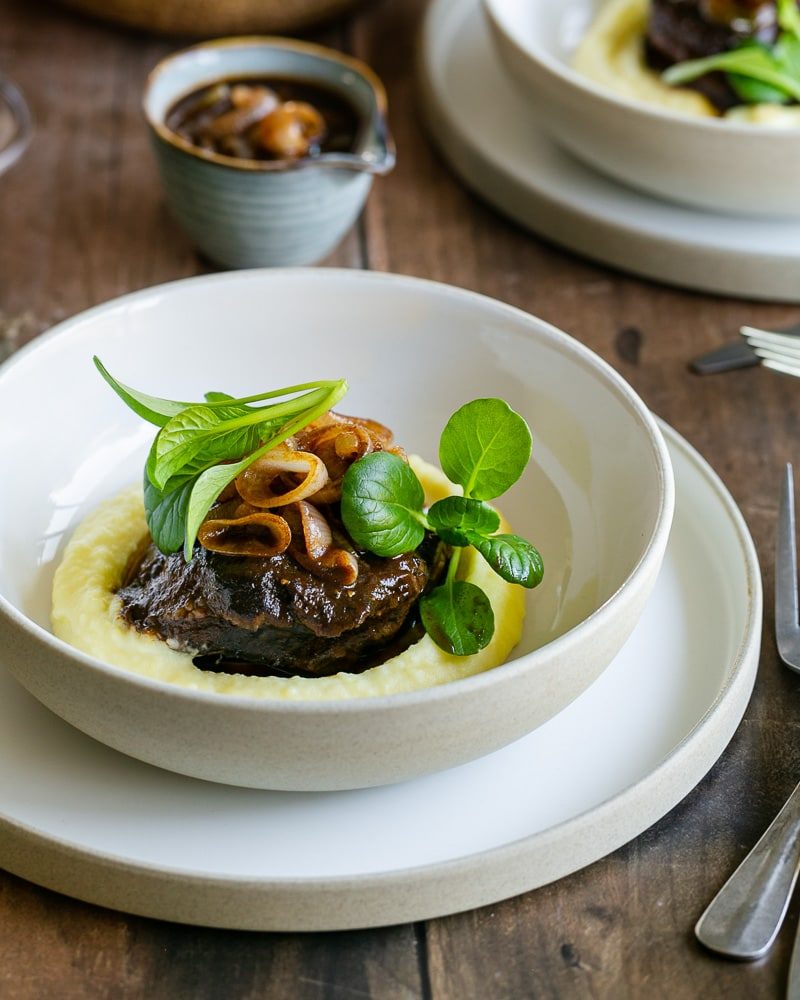
Strained and reduced, we turn this sauce into a complex, elegant restaurant style shallot jus. All you have to do, is refine it to your taste!
Braised beef cheeks are great for making ahead! As with most braised meats, they taste even better when re-heated. So, dive into this detailed recipe and learn how to cook one of the most popular braising cuts - beef cheeks!
Jump to:
WHAT ARE BEEF CHEEKS
As the name suggests, beef cheeks are the facial cheeks of a cow. They are quite a used muscle due to the constant chewing of the cud hence making the cheeks a tough cut of meat. As with most such cuts, the meat has to be slowly braised in order to tenderise them. When cooked properly, these turn into the most magical piece of umami meat!
Talk to your butcher when buying beef cheeks. The sinew part has to be removed otherwise the beef cheeks will not tenderise even after hours of cooking.
WHAT YOU NEED TO MAKE THIS RECIPE
The ingredients for making beef cheeks can vary! Here is what I used, I have also included some suggestions for substitutes:
Beef Cheeks is the preferred cut for this recipe. Nowadays they are easy to find and rather inexpensive. If not available, beef chuck or short ribs will work too with the same cooking procedure.
Red Wine is an essential ingredient for braising cheeks. It not only adds taste it gives the sauce it's deep colour and sticky glaze. I used a cheap pinot noir, no expensive wine needed here.
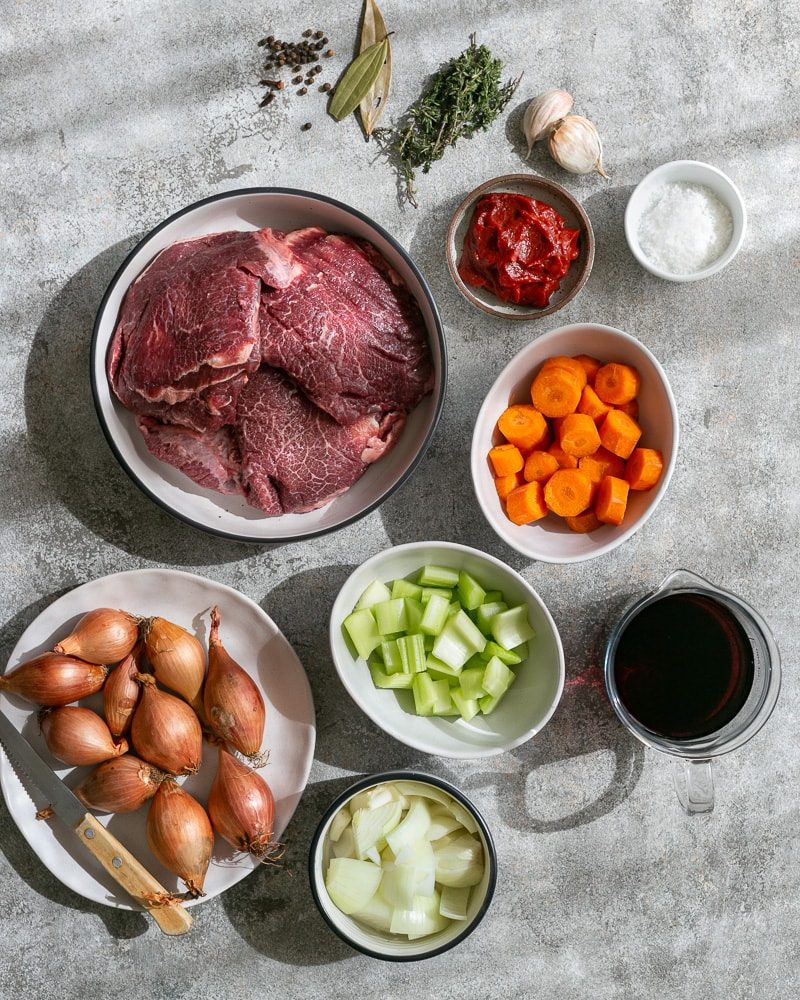
Mirepoix is a French term used in cooking. It refers to the aromatic vegetables used for flavouring braised meats and stew. They usually consist of carrots, onion and celery, sometimes leek too.
Shallots and garlic add both great flavour to the dish. While the garlic is added to the cheeks before braising the shallots are cooked afterwards for the shallot jus.
Tomato paste is added to the mirepoix, then roasted for a deep colour and complex flavour. You can use fresh tomatoes instead but be aware it can take a while to achieve a similar roasting effect.
Spices and herbs like bay leaf, thyme, clove and peppercorns are needed for this recipe. Of course you can add your own preferred spices and herbs like rosemary, tarragon, star anis or cumin, it's up to you.
HOW TO COOK BEEF CHEEKS
To braise the beef cheeks, we first need to determine if the cheeks need to be cleaned or are ready to be cooked. If not done already, you have to remove any sinew tissue and excess fat surrounding the cheeks. Alternatively, this can be done by your butcher when buying the cheeks.
Once your vegetables are prepared and you have gathered all remaining ingredients, start by heating up a heavy bottom wide pot or pan on high heat.
CARAMALISING THE CHEEKS
Season the beef cheeks generously with salt from both sides. Add a little olive oil and brown the cheeks in the pan. This step is important as the caramelisation of the cheeks will add flavour and depth to the sauce.
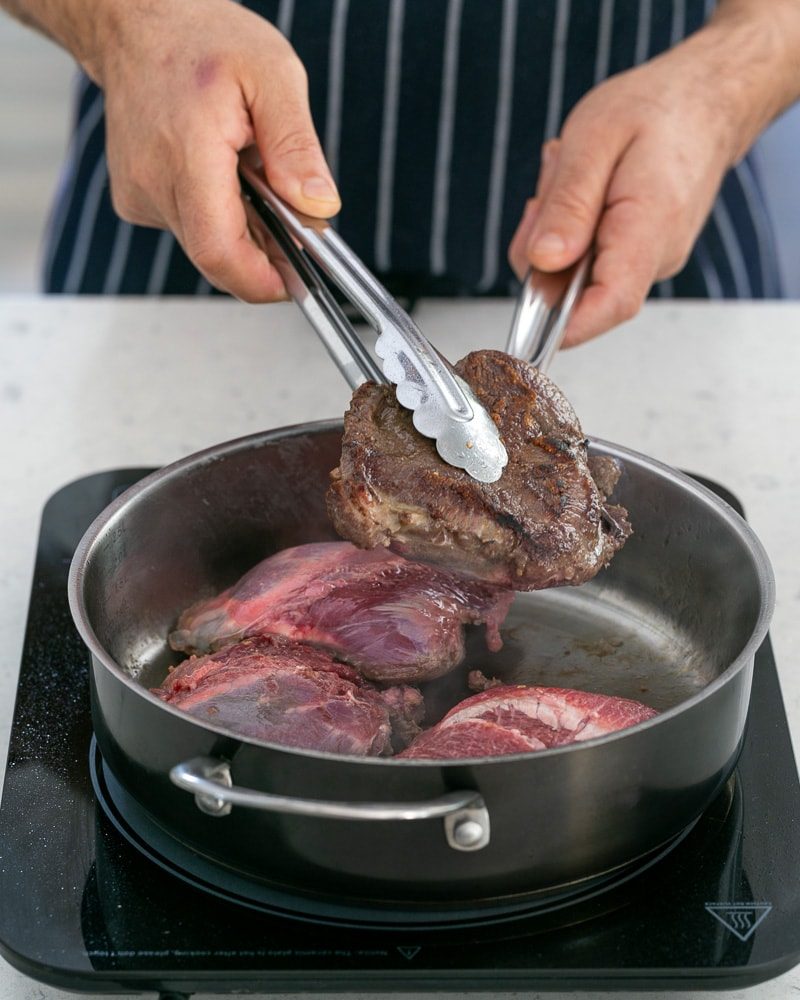
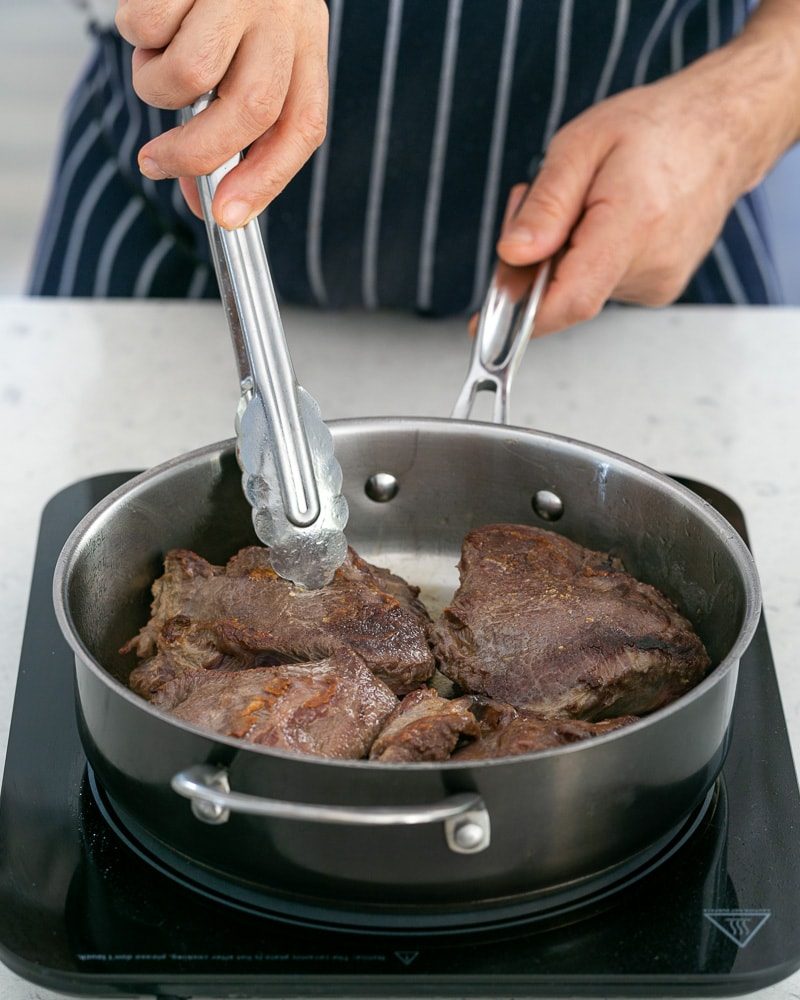
ROASTING THE MIREPOIX
Remove the cheeks from the pan, add a bit more olive oil and add the mirepoix (carrots, onions and celery). Roast the mirepoix for a few minutes, caramelising them lightly.
Now add the tomato paste to the mirepoix and roast all together. Cooking out the paste will remove any raw tomato flavour.
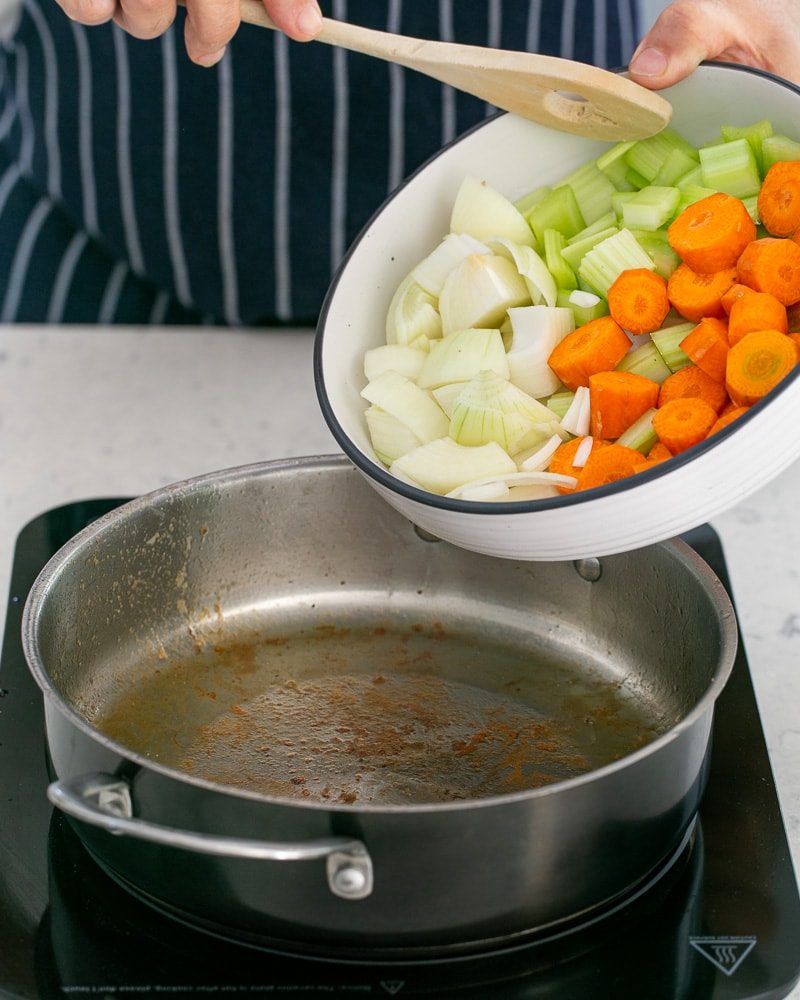
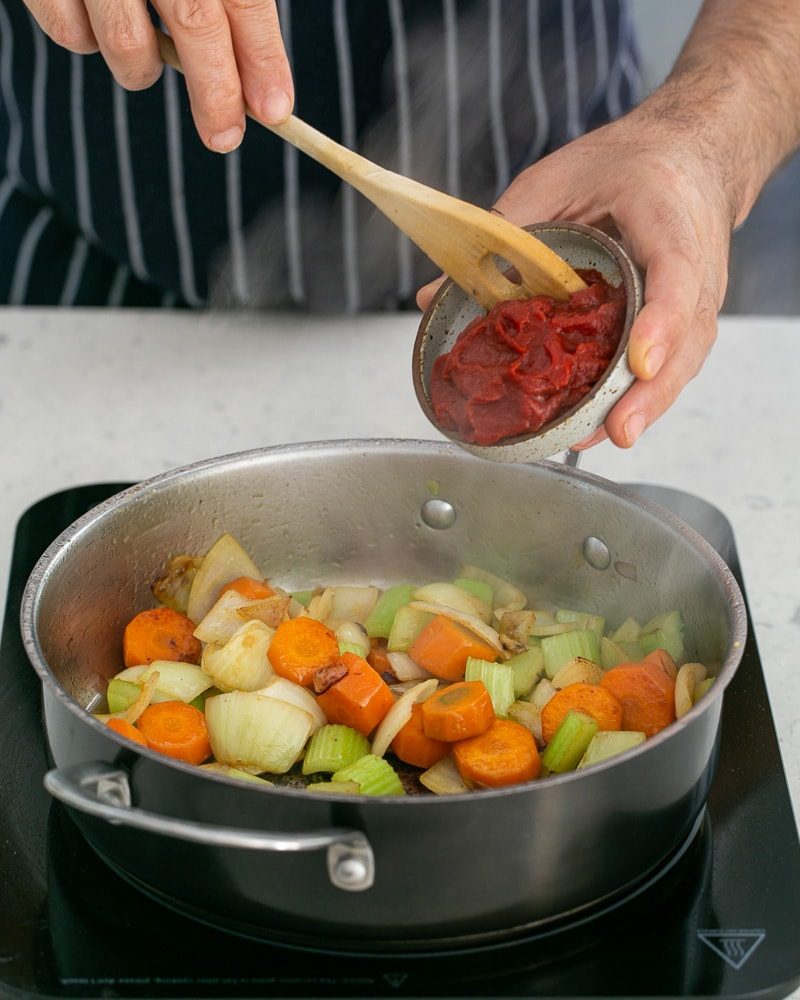
DEGLAZING THE PAN
Next deglaze the pot with the red wine. Use a wooden spoon and scrape off any burnt particles from the bottom of the pan (again this adds colour to the braising liquid hence it's a good technique).
Reduce the heat and add the herbs, spices and garlic. Finally add the beef cheeks back to the pot and add enough water (or beef stock if you prefer) to submerge the cheeks completely.
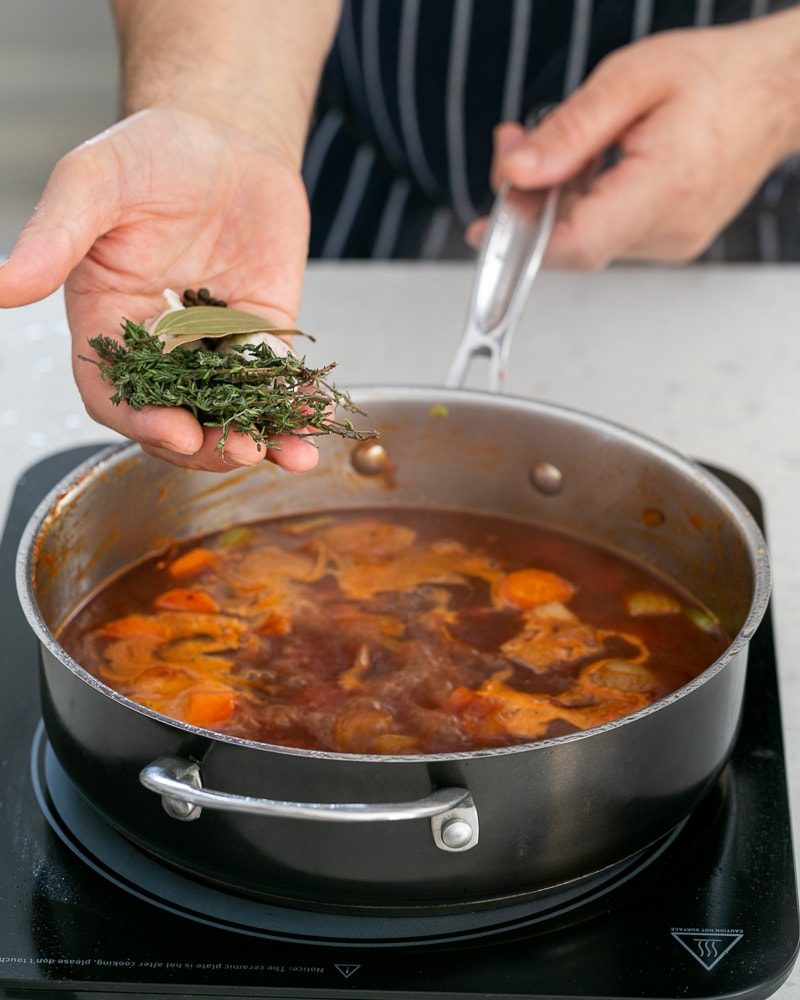
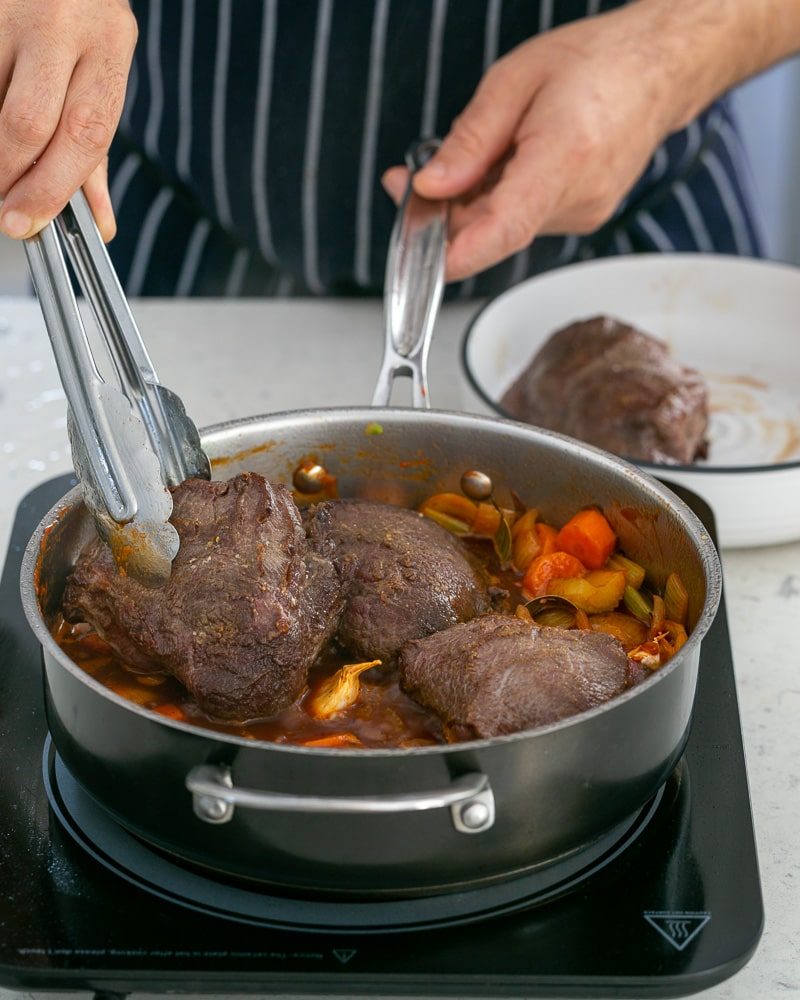
BRAISING THE BEEF CHEEKS
Add a pinch of salt to the braising liquid and cover the pan with a lid. Simmer on low heat for 2 ½ hours, turning the cheeks 2-3 times during the cooking time. To ensure the cheeks stay submerged in braising liquid, you occasionally might have to top it up with some more liquid.
Once the cooking time is up, use a skewer or fork to insert into the cheeks - they should be soft as butter by now! If not, continue braising the cheeks until they are done.
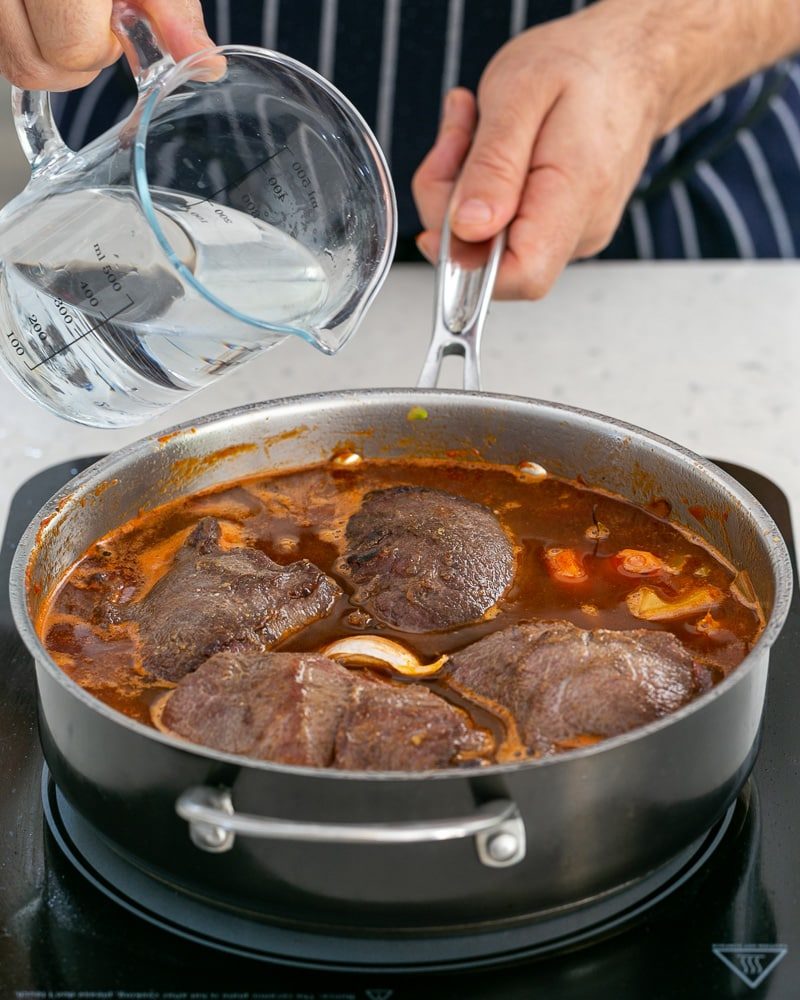
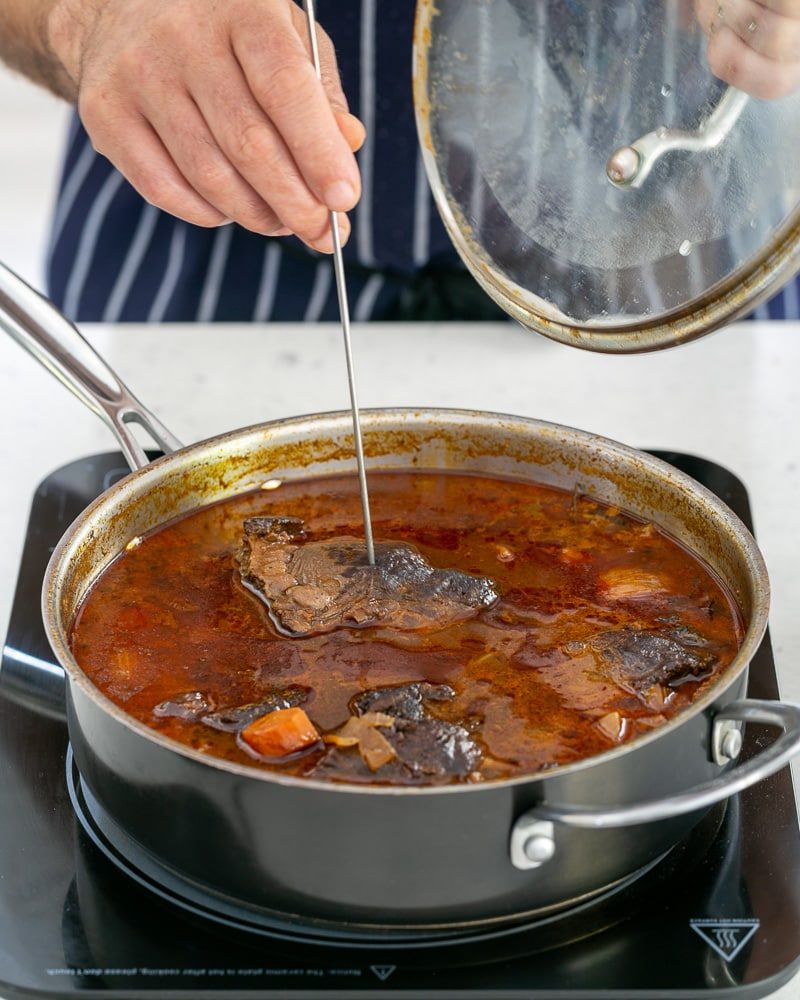
AS A NOTE: Alternatively, the cheeks can be braised in the oven, covered at 160°C (325°F) for the same duration of cooking time.
MAKING THE SHALLOT JUS
A jus is a French term and refers to a sauce that has been made from meat. Since the sauce will already be packed with flavour, you can make it a bit different, as outlined in our recipe. Otherwise shallots can be replaced with roasted mushrooms or you can also make a peppercorn jus instead by adding green peppercorns and cream.
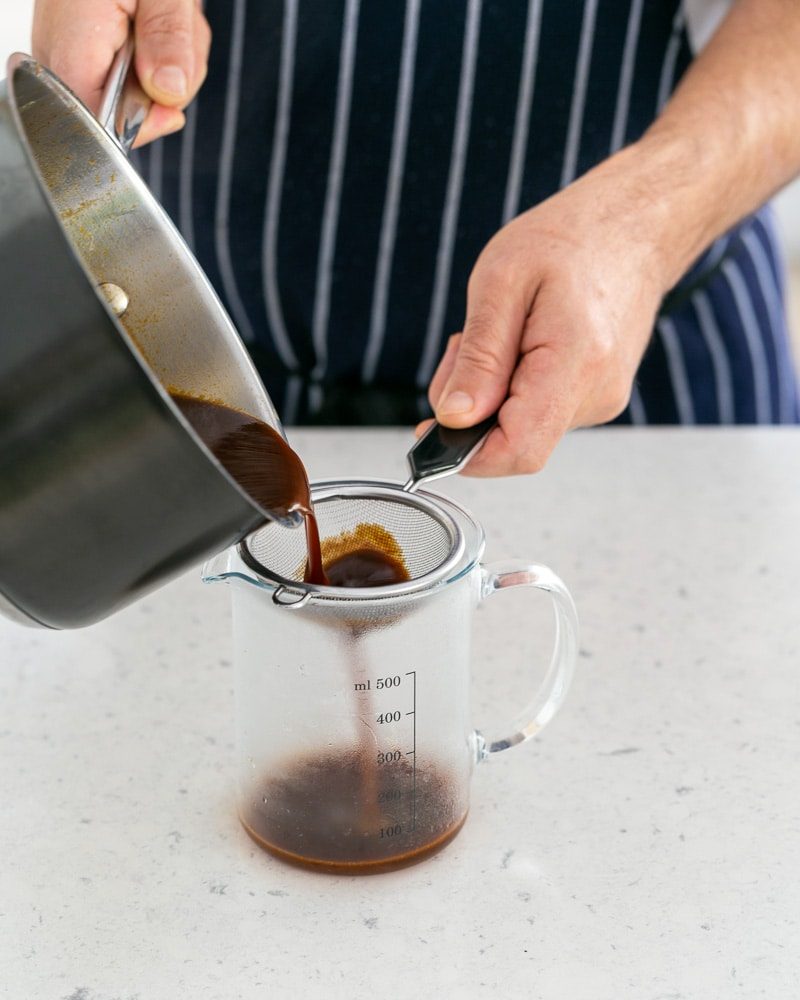
If you choose to make our shallot jus (which I really hope you do) follow these steps.
STEP 1
Remove the braised beef cheeks from the pot and strain the cooking liquid. Now add the cooking liquid into a smaller pot and reduce to ⅓ on simmer.
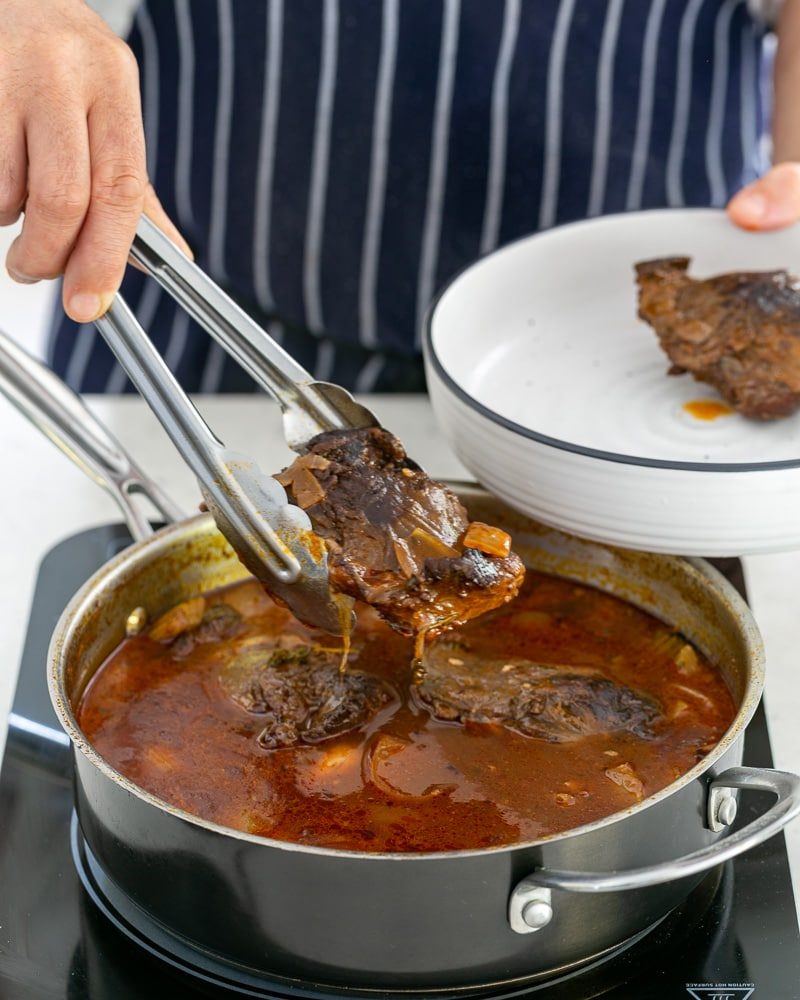
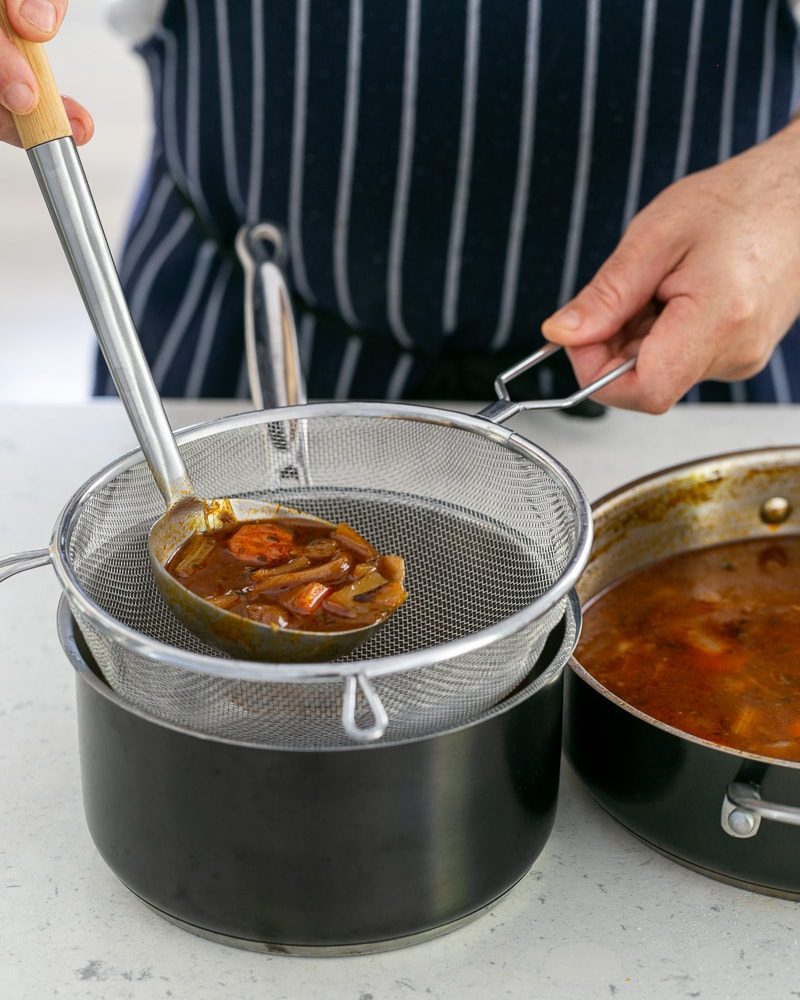
STEP 2
Meanwhile prepare the shallots. Cut them into thick rings and roast them in a pan with olive oil on high heat.
Once the shallots start caramelising, reduce the heat to low and season them with salt.
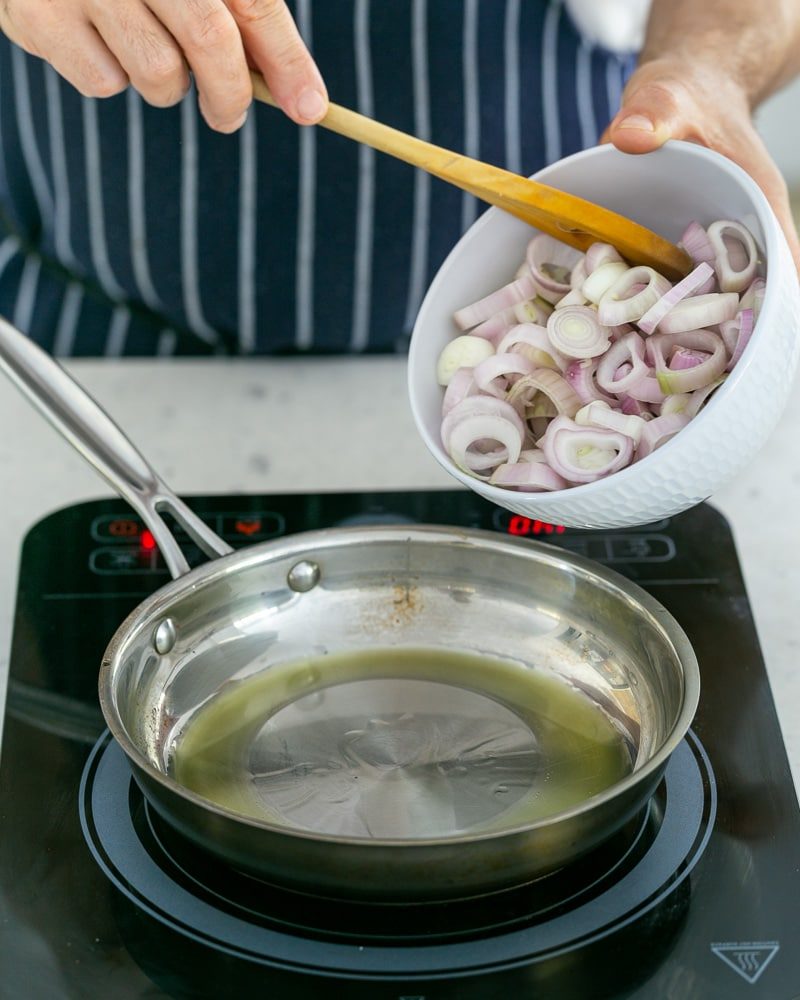
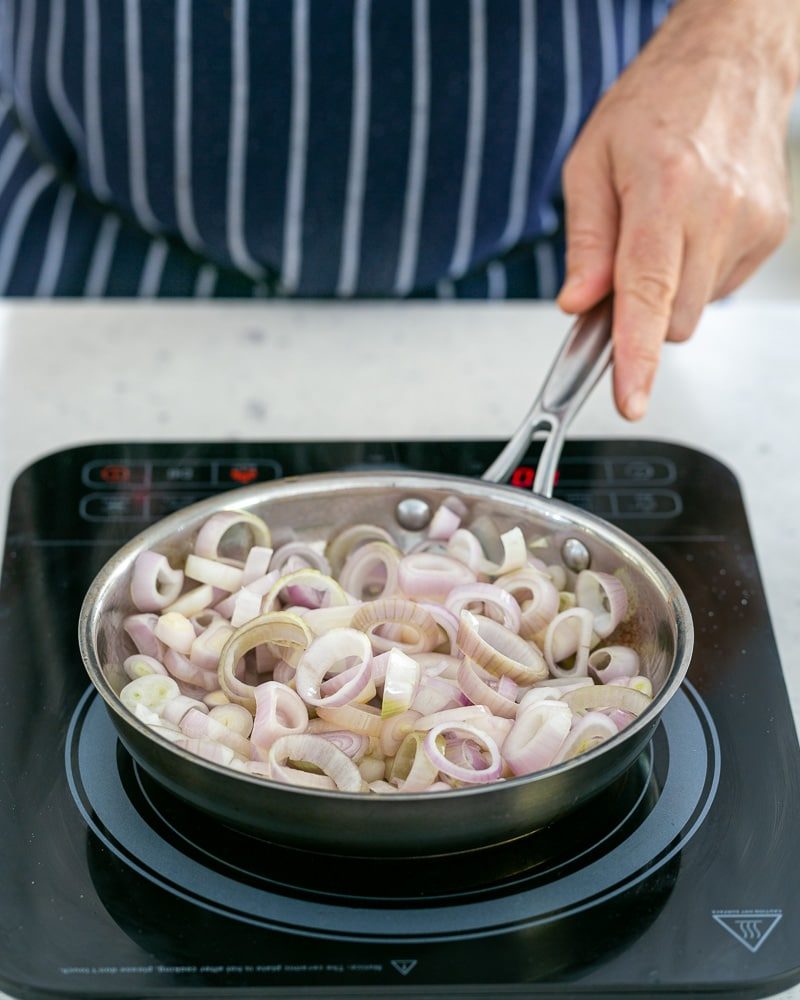
STEP 3
Add the reduced jus to the shallots and simmer for a few minutes to combine them well.
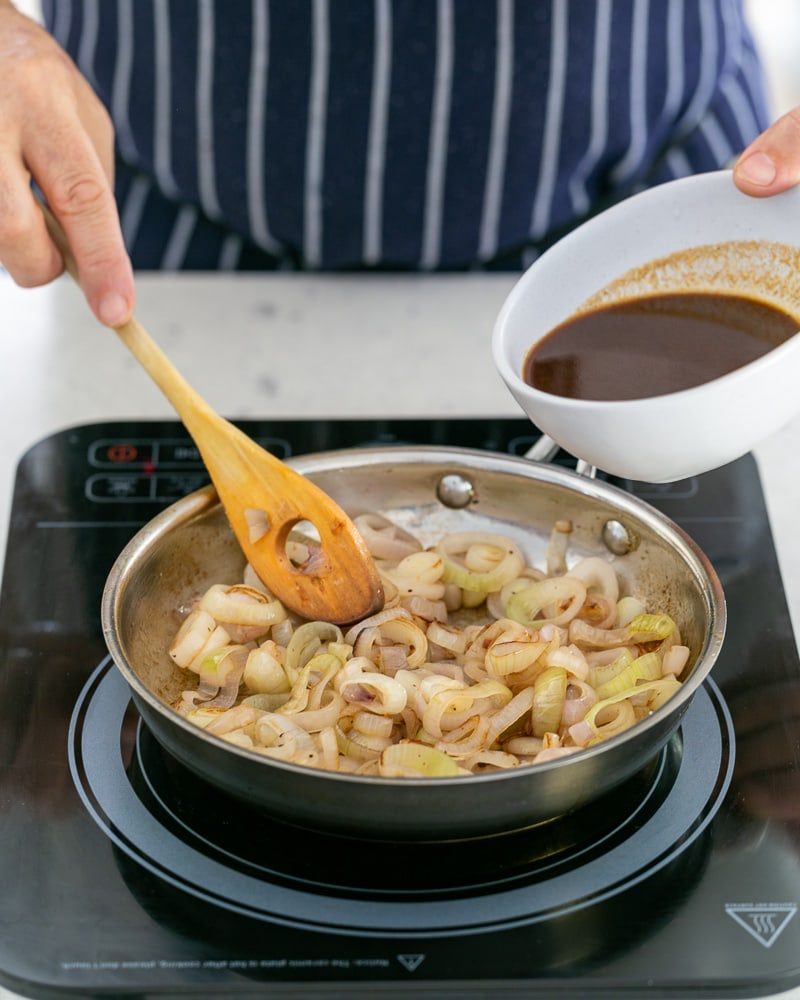
AS A NOTE: If you find the sauce too sweet, add a teaspoon of balsamic vinegar to balance the jus.
FAQ'S
What if the beef cheeks are still tough
If you have removed all the sinew from the cheeks and followed the steps of how to cook beef cheeks, you most probably have used larger sized cheeks. Continue braising them on low heat, making sure they are submerged at all time. They will eventually tenderise!
What else can you make with braised beef cheeks
Besides serving them whole, braised beef cheeks can be pulled and added into tacos or filled in raviolis or cannelloni's. They make a great pie filling too or can easily be turned into a ragout and served with pappardelle pasta.
HOW TO SERVE THE BEEF CHEEKS
Beef cheeks call for a hearty meal hence a creamy mashed potato is the perfect accompaniment for them. Adding a few tasty side dishes to this main, will also be a great option!
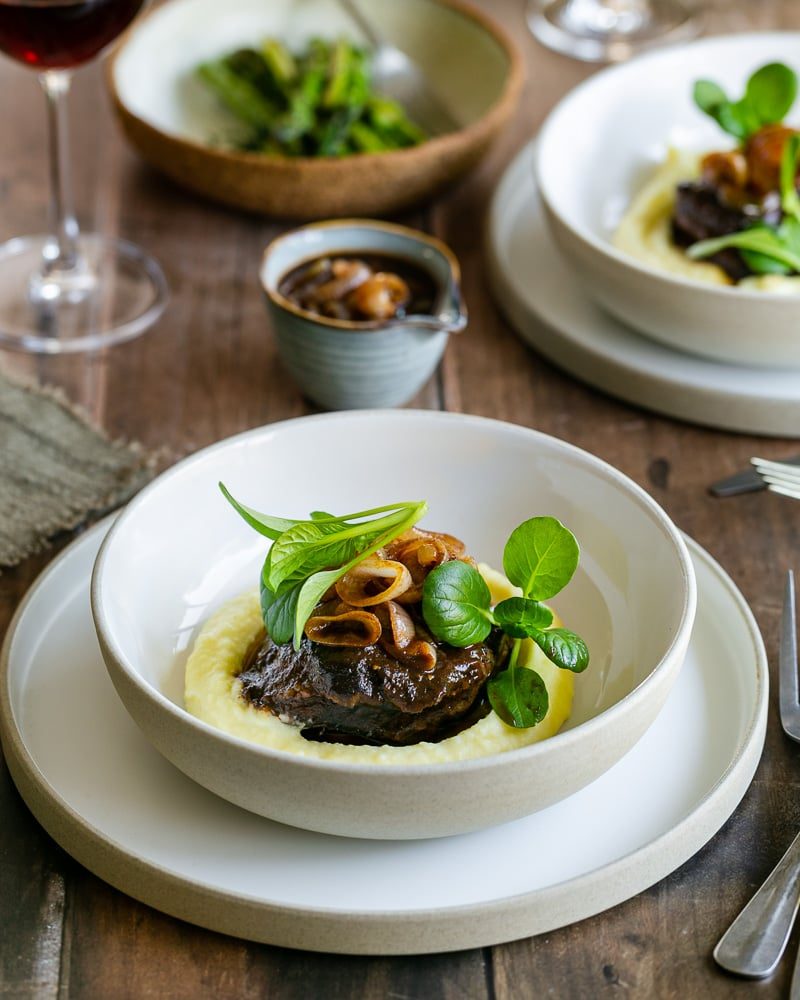
Here are some side dish ideas:
Serve a side of roasted baby carrots with a carrot top chimichurri
Or this delicious side salad with buttermilk dressing and lardons
Try this creamy soft polenta and serve instead of mashed potatoes, made by Love & Lemons
Or a eye pleasing roasted pumpkin side with miso and nori dukkah
This light brussels sprout slaw with raisins would also go well with the cheeks
This is a simple recipe, elegant enough for entertaining but also effortless enough for a mid week meal! Whichever side you decide to serve your braised beef cheeks with, let us know how you went!
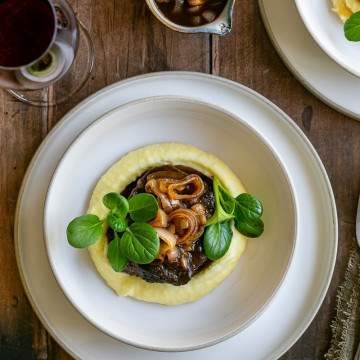
Braised Beef Cheeks with Shallot Jus
Equipment
- wide heavy bottom pot with lid
- fine strainer
- pan
Ingredients
for the beef cheeks
- 4 beef cheeks (around 1.2kilogram or 2.6 pounds)
- 400 milliliters red wine
- 2 medium carrots peeled and chopped in dices
- 2 small celery sticks chopped in dices
- 1 large brown onion peeled and chopped in dices
- 2 garlic clove peeled and finely chopped
- 3 tablespoon tomato paste
- 4 thyme sprigs
- 2 bay leaf
- 2 clove
- 10 black peppercorns
- olive oil as needed
- salt to taste
for the shallot jus
- 10 medium shallots peeled and cut in rings
- olive oil as needed
- salt and pepper to taste
Instructions
for the beef cheeks
- Remove any sinew tissue and excess fat from the beef cheeks and prepare your vegetables and other ingredients.
- Heat up a heavy bottom wide pot on high heat.
- Season the beef cheeks generously with salt from both sides. Add a little olive oil to the pan and roast the cheeks from all sides. Caramelise the cheeks as much as possible as this will add flavour and depth to the sauce.
- Remove the beef cheeks from the pan and set aside. Add a little more olive oil to the pan and add the mirepoix (carrots, celery and onions).
- Roast the mirepoix for a few minutes, caramelising them lightly. Now add the tomato paste to the mirepoix and roast all together. Cooking out the paste will remove any raw tomato flavour.
- Next deglaze the pan with the red wine. Use a wooden spoon and scrape off any burnt particles from the bottom of the pan.
- Reduce the heat and add the herbs, spices and garlic. Finally add the beef cheeks back to the pot and add enough water (or beef stock if you prefer) to submerge the cheeks completely.
- Add a pinch of salt to the braising liquid and cover the pan with a lid. Simmer on low heat for 2½ hours turning the cheeks 2-3 times during the cooking time. To ensure the cheeks stay submerged in braising liquid, you occasionally might have to top it up with some more liquid.
- Once the cooking time is up, use a skewer or fork to insert into the cheeks - they should be soft as butter by now! If not, continue braising the cheeks until they are done.
for the shallot jus
- Remove the braised beef cheeks from the pot and strain the cooking liquid. Now add the cooking liquid into a smaller pot and reduce to ⅓ on simmer.
- Meanwhile prepare the shallots. Cut them into thick rings and roast them in a pan with olive oil on high heat. Once the shallots start caramelising, reduce the heat to low and season them with salt.
- Add the reduced jus to the shallots and simmer for a few minutes to combine them well.
to plate up
- we recommend serving the beef cheeks with mashed potatoes, topped with the shallot jus. Serve the remaining jus on the side


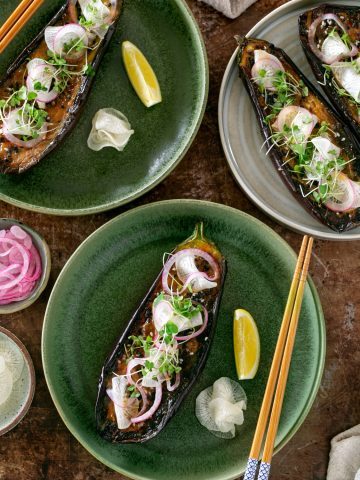
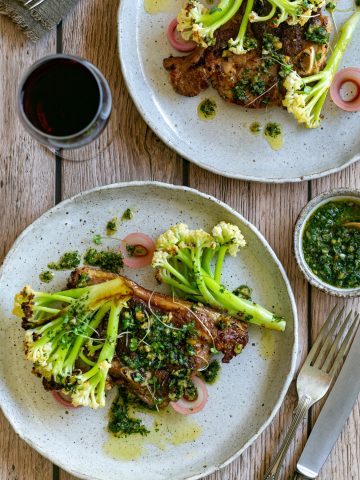
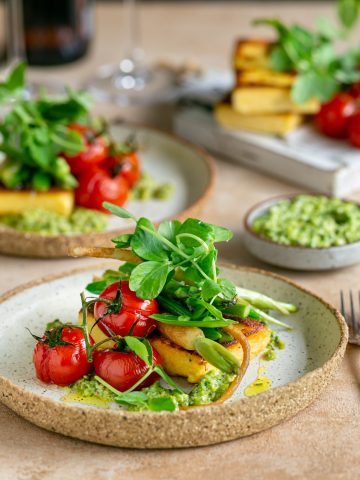
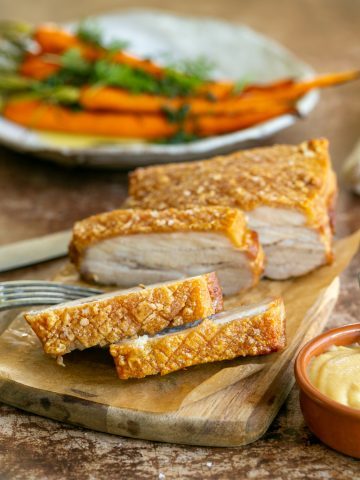
Sylvie
What a gorgeous dish, it looks so comforting and delicious! It would be great for a dinner party
Shilpi & Etienne
Thanks Sylvie! Its a great one pot meal recipe especially for entertaining!
Gives you more time to relax and actually enjoy the evening with your guests😉
Allison
Beef cheeks are my favourite cut! Happy to find your delicious recipe to try.
Shilpi & Etienne
Great to read that Allison! We hope you enjoy making and eating this dish as much as we did!
Sarah
I've never cooked with beef cheeks but you make it look so easy and yummy! Great comfort food with a big pile of pillow mash potato, yum!
Shilpi & Etienne
Thanks Sarah! So happy you find the recipe and tips useful. Its a beautiful cut of meat that doesn't disappoint if cooked the right way!
We can't wait for you to make this dish!
Briggs
What’s the greens you used for garnish?
Shilpi & Etienne
Hello Briggs
We have used Mâche salad leaves to garnish the dish. It is a delicate green also known as lamb's lettuce. Are you familiar with it?